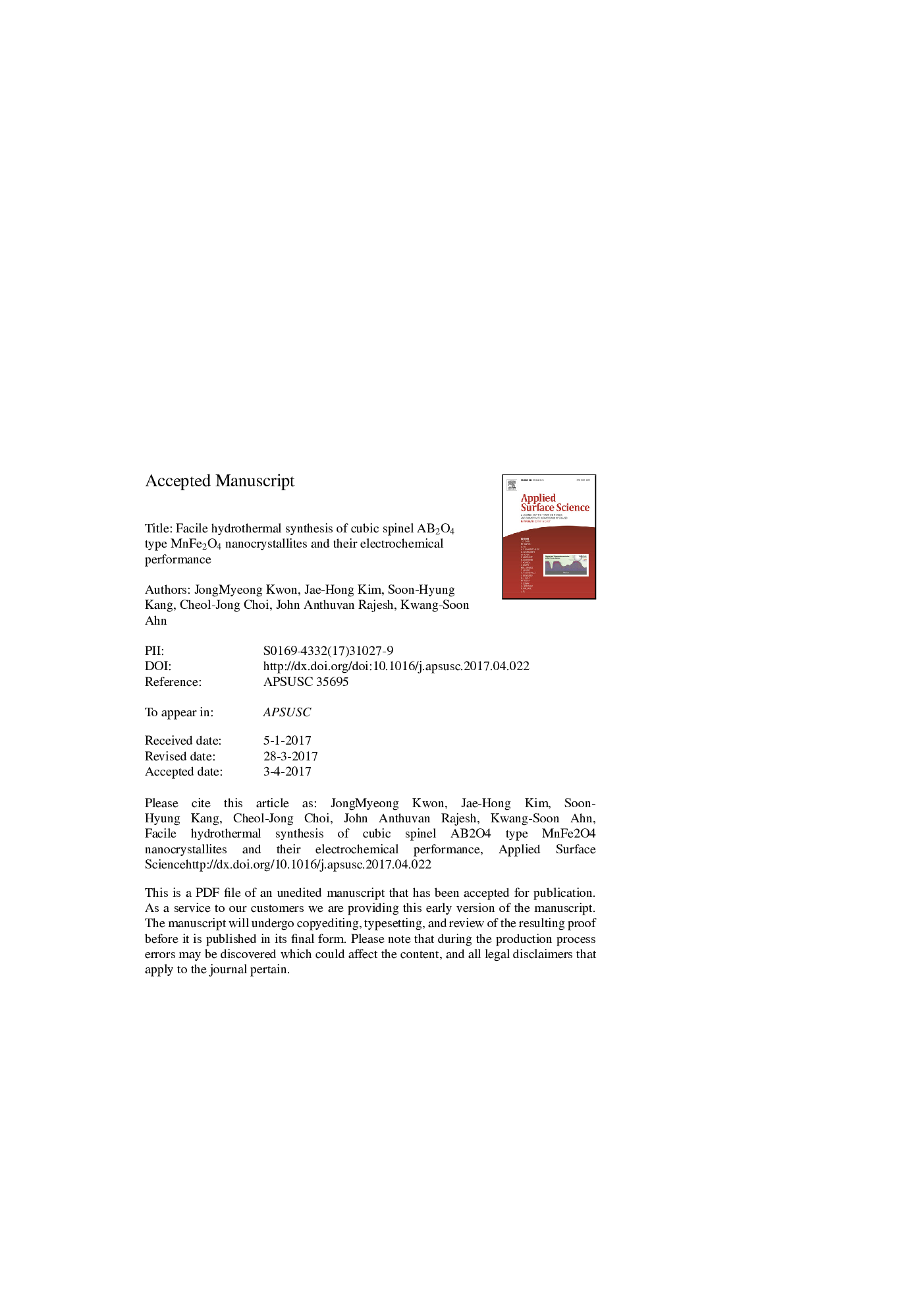| Article ID | Journal | Published Year | Pages | File Type |
|---|---|---|---|---|
| 5350943 | Applied Surface Science | 2017 | 13 Pages |
Abstract
Cubic spinel MnFe2O4 nanoparticles were synthesized using a simple hydrothermal method followed by post-annealing. The effects of the reaction temperature on the crystallinity, morphology, and electrochemical performance were studied. The reaction temperature played an important role in the synthesis of highly crystalline MnFe2O4 nanoparticles. At low reaction temperatures (<160 °C), the synthesized product contained a secondary inactive Fe2O3 phase as well as MnFe2O4 nanoparticles. In contrast, pure MnFe2O4 nanoparticles were obtained at temperatures above 180 °C. Furthermore, the crystallinity of the MnFe2O4 nanoparticles was enhanced significantly by increasing the reaction temperature to 200 °C. The cubic spinel MnFe2O4 nanoparticles synthesized at 200 °C delivered a maximum specific capacitance of 282.4 F gâ1 at a current density of 0.5 A gâ1 in a 2 M aqueous KOH solution, and exhibited long-term cyclic stability of 85.8% capacitance retention after 2000 cycles. This was attributed to the cubic spinel ferrite nanocrystallite particles not only providing the more active sites for OHâ ion diffusion but also reducing the path lengths for OHâ ion diffusion. These results show that the synthesized MnFe2O4 nanoparticles are promising candidates for pseudocapacitors and other electrochemical applications.
Related Topics
Physical Sciences and Engineering
Chemistry
Physical and Theoretical Chemistry
Authors
JongMyeong Kwon, Jae-Hong Kim, Soon-Hyung Kang, Cheol-Jong Choi, John Anthuvan Rajesh, Kwang-Soon Ahn,
